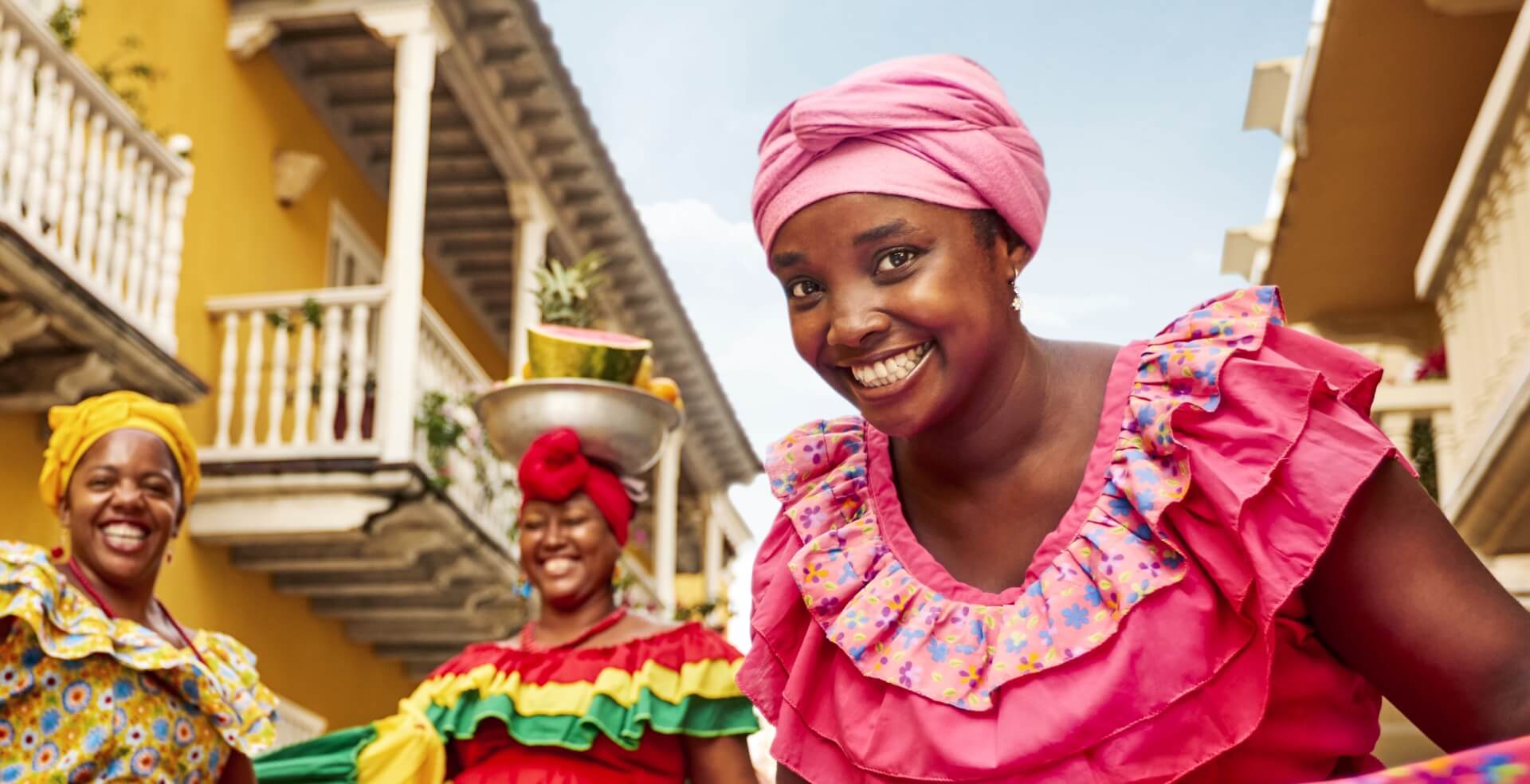Summarizing the features of a destination like Santa Marta is pleasant per se, but more so in this case in the light of the many factors it combines. There are more than enough reasons to exalt this tropical city and its surroundings as one of the most important destinations for foreigners and nationals. Thanks to these reasons, the Colombian Constitution of 1991 declared Santa Marta a tourism, cultural, and historical district.
A Tour of Santa Marta
Well known as possessing the most beautiful bay in America, Santa Marta is projecting itself as a modern city thanks to the infrastructure being developed and planned for the coming years. With it, there will be a harmonious interconnection among the port of Santa Marta, the historical center, and the beaches at El Rodadero.
The capital of the department of Magdalena is located on the shores of the Caribbean Sea, at the foothills of the magnificent Sierra Nevada de Santa Marta.
Santa Marta is famous for having the tallest seaside mountain in the word, a place where the charms of a very old natural reserve join the wisdom of the ancestral peoples that make it their home and take care of it.
Enjoying Sun and Beach in Santa Marta
Along the Santa Marta beaches, the sea is calm because of the protection provided by the mountain range. Experts say that the wind passes by without affecting the area; it is safe from the hurricanes that affect other coastal areas of the Atlantic. It’s true! The Santa Marta beaches have never suffered from that natural phenomenon.
With the tranquility provided by those white sands and gentle waves, Santa Marta and the landscapes that border the Caribbean please tourists who seek the sun and a warm, happy atmosphere. Enthusiasm is evident in sectors like El Rodadero, one of the better-know tourism complexes of the region on account of its hotel, restaurant, disco, and shopping offers.
Motorboats depart daily from El Rodadero to El Acuario and Playa Blanca, the latter a peaceful site for snorkeling. However, there are more beaches near the city, each one with its own features. Examples are: Bahía Concha with its forest landscapes; Taganga, a typical fishermen’s village where
several diving schools have their headquarters; and the beaches that are part of the Tayrona National Natural Park, the main ones being Arrecifes, Cañaveral, and San Juan del Guía.

Santa Marta’s Green, Exuberant Nature
The enjoyment of the beaches and small coves that border Santa Marta is just one of the things to do in this paradise-like destination. The best reference many people have on the area is the Tayrona National Natural Park and, naturally, the Sierra Nevada de Santa Marta, with the superb nature and spiritualitly that is perceived on its slopes by virtue of the aboriginal families that inhabit it - people for whom respect for flora and fauna is sacred.
Aside from its pretty, solitary beaches, it has sites for diving safely, camping sites, and ecological trails replete with trees, over 200 bird species, and other species like monkeys, deer, and skunks that, in the end, are its main inhabitants.
Again in reference to the Sierra Nevada de Santa Marta, it is said that it is the region’s icon for its imposing 6,000- meter height at the sea’s edge, the inspiration it elicits, and the mysticism of its inhabitants. Kogi, Arzario, and other Indian families explain the wisdom and legacy passed from their Tayrona ancestors in locations embedded in the jungle, such as Pueblito and Ciudad Perdida.
Santa Marta Is Ancient and Historical
Santa Marta emerged amid attractive beaches and bountiful nature in 1525 as the first city on Colombian territory. It is also one of the oldest cities in the American continent. The historical center is romantic, colonial and very well preserved. The Cathedral, the Santo Domingo Convent, the Tayrona Gold Museum, and the Consistorial House stand out as historical, traditional sites.
In the township of Mamatoco, at a distance of five kilometers from downtown Santa Marta, lies the Quinta de San Pedro Alejandrino, the house of the hacienda lent to Liberator Simón Bolívar in 1830 and the place where he spent his final days. Simón Bolívar passed away in this country house that preserves important documents and objects from his life and works.
The capital of the department of Magdalena is the sum of locations, details, and features to which a devoted reference must always be made. Santa Marta - the railroad, land, and maritime port - is not far from the banana plantations and the town of Aracataca, the land of prodigious Gabriel García Márquez, the unparalleled chronicler of the city and the region.















